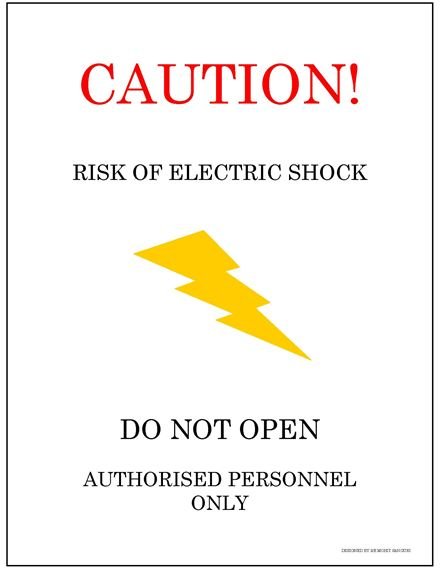AC and DC Electric Shock Effects Compared
Difference between AC and DC Current
An AC current is alternating in nature and follows a sine curve. It is continuously changing direction and passing through zero to a maximum positive value and then to a maximum negative value. The voltage of an AC current is a RMS or root mean square value, and the peak or maximum value is 1.4 times the RMS value. It means that a 220 V AC supply is going to 308 Volts before coming down to zero and changing direction.
DC current is direct current and does not change in magnitude, though it can be negative or positive depending on the direction of the circuit. DC current is ideal for electronic circuits whereas AC is ideal for electrical installation and motors, etc.
Effects of an AC or DC Currents on the Human Body
The three basic factors that determine what kind of shock you experience are the amplitude of the current, the duration of the current passing through the body, and the frequency.
Direct Currents actually have zero frequency, as the current is constant. However, there are physiological effects during electrocution no matter what type of current.
The factor deciding the effects of the AC and DC current is the path the current takes through the body. If it is from the hand to the foot, it does not pass through the heart, and then the effects are not so lethal.
However DC current will make a single continuous contraction of the muscles compared to AC current, which will make a series of contractions depending on the frequency it is supplied at. In terms of fatalities, both kill but more milliamps are required of DC current than AC current at the same voltage.
If the current takes the path from hand to hand thus passing through the heart it can result in fibrillation of the heart. Fibrillation is a condition when all the heart muscles start moving independently in a disorganized manner rather than in a state of coordination. It affects the ability of the heart to pump blood, resulting in brain damage and eventual cardiac arrest.
Either AC or DC currents can cause fibrillation of the heart at high enough levels. This typically takes place at 30 mA of AC (rms, 60 Hz) or 300 – 500 mA of DC.
Though both AC and DC currents and shock are lethal, more DC current is required to have the same effect as AC current. For example, if you are being electrocuted or shocked 0.5 to 1.5 milliamps of AC 60 Hz current is required and up to 4 mA of DC current is required. For the let-go threshold in AC a current of 3 to 22 mA is required against 15 to 88 of DC current.
Facts about Electric Shock
-
It is the magnitude of current and the time duration that produces effect. That means a low value current for a long duration can also be fatal. The safe current/time limit for a victim to survive at 500mA is 0.2 seconds and at 50 mA is 2 seconds.
-
The voltage of the electric supply is only important as it ascertains the magnitude of the current. As Voltage = Current x Resistance, the bodily resistance is an important factor. Sweaty or wet persons have a lower body resistance and so they can be fatally electrocuted at lower voltages.
-
Let-go current is the highest current at which subject can release a conductor. Above this limit, involuntary clasping of the conductor is present. It is 22 mA in AC and 88 mA in DC.
-
Apart from electric shock the other equally dangerous hazards of playing (or working) with electricity are electrical arc flash and electrical arc blast.
-
Placing your hand in your pocket may protect you by preventing a current from traveling through the heart making a shock non-lethal.
-
The severity of the electric shock depends on the following factors: body resistance, circuit voltage, amplitude of current, path of the current, area of contact, and duration of contact.
-
Death may also occur from falling in case of electric shock.
-
Burn injury may occur at both the entrance and exit of the current.
-
Low frequency AC is more dangerous than high frequency AC.
-
AC and DC both kill so treat them with respect.
References
A Novel Electric Shock Protection System Based on Contact Currents on Skin Surface by Ashutosh Saxena,Supratim Ray, and Rajiv K. Varma
Arc-Flash and Electrical Shock Hazards - How to Keep Your Facility Compliant by Dennis K. Neitzel, CPE
UK Portable Appliance Testings - PAT Testing and Portable Appliance Testing information
Applied bioelectricity: from electrical stimulations to electropathology by By J. Patrick Reilly
Electric Shock: https://hyperphysics.phy-astr.gsu.edu/hbase/electric/shock.html
Electric Shock: https://en.wikipedia.org/wiki/Electric_shock
Image Credit
Image by, Mohit Sanguri, Chief Engineer of caution poster used on merchant ship electrical switch board panels.
